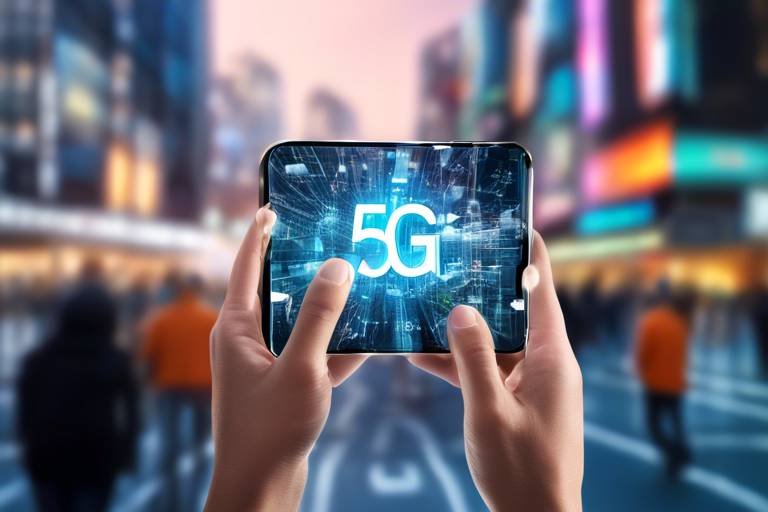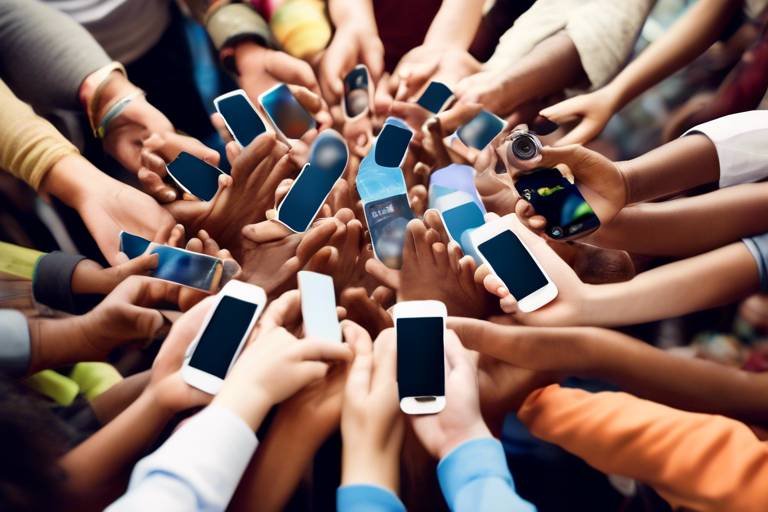How Technology is Reshaping the Entertainment Industry
The entertainment industry is undergoing a **remarkable transformation**, driven by rapid advancements in technology. Gone are the days when audiences were limited to traditional media formats like television and radio. Today, technology is not just a tool for entertainment; it is the very backbone of how content is created, distributed, and consumed. From streaming services that deliver endless hours of films and shows to virtual reality experiences that immerse players in fantastical worlds, the landscape of entertainment is changing at an unprecedented pace.
One of the most significant shifts has been the rise of **streaming services**. Platforms like Netflix, Hulu, and Disney+ have revolutionized the way we consume media, allowing viewers to watch their favorite shows and movies on-demand, anytime and anywhere. This shift has not only changed audience behavior but has also posed challenges for traditional networks and cinemas. With the convenience of streaming, many wonder: will we ever return to scheduled programming? The answer seems to lean towards a resounding no. As more people embrace the flexibility of streaming, the question arises: how will this impact the future of content creation and distribution?
Moreover, technology has paved the way for **immersive experiences** in gaming through virtual reality (VR). Imagine stepping into a game where you can physically look around and interact with the environment as if you were truly there. This level of immersion is reshaping how players engage with games, making them more than just passive participants. It's an exhilarating experience that can evoke emotions similar to those felt during a thrilling movie. As VR technology continues to evolve, the potential for storytelling in gaming is limitless.
Then there's augmented reality (AR), which is blurring the lines between the digital and physical worlds. AR is not just for gaming; it’s being utilized in various forms of entertainment, from interactive art installations to live events. Picture this: you’re at a concert, and as your favorite band plays, your phone screen overlays digital effects that enhance the performance. This fusion of reality and digital elements creates a **unique experience** that captivates audiences. The potential for AR to enhance live events and films is vast, providing new avenues for creativity and audience engagement.
Furthermore, the impact of technology extends beyond just how we consume entertainment; it also influences how it’s created. With advanced tools and software, filmmakers and content creators can produce high-quality content more efficiently than ever before. **Innovative techniques** in animation, CGI, and editing are allowing for stories to be told in ways that were previously unimaginable. As technology continues to advance, we can expect even more groundbreaking developments in the filmmaking process.
Social media plays a crucial role in this evolving landscape as well. Platforms like Instagram, TikTok, and Twitter have changed the way content is marketed and consumed. They allow for instant feedback and engagement from audiences, creating a two-way street between creators and fans. This shift has led to the rise of **influencer marketing**, where social media personalities promote entertainment content, reaching target audiences in a more relatable way. Influencers have become modern-day gatekeepers, shaping trends and driving engagement in ways that traditional advertising simply cannot match.
Additionally, user-generated content is reshaping the entertainment industry. Audiences are no longer passive consumers; they are actively participating in the creation of content. Whether it's fan art, remixes, or even entire web series, the lines between creators and consumers are blurring. This democratization of content creation is challenging traditional entertainment models, forcing industry leaders to adapt to a new reality where anyone with a smartphone can become a content creator.
- How has streaming changed the entertainment industry? Streaming has made content more accessible, allowing audiences to watch what they want, when they want, leading to a decline in traditional cable subscriptions.
- What is the future of virtual reality in gaming? The future looks promising, with advancements in technology expected to create even more immersive and interactive gaming experiences.
- How does social media influence entertainment marketing? Social media allows for direct engagement with audiences, making it easier for creators to promote their work and for fans to interact with their favorite content.
- What role does user-generated content play in the industry? User-generated content empowers audiences to contribute to the entertainment landscape, challenging traditional content creation models and fostering community engagement.

The Rise of Streaming Services
Streaming platforms have undoubtedly revolutionized the way we consume media. Gone are the days of waiting for your favorite show to air on television or flipping through channels aimlessly. Today, we have a vast library of content at our fingertips, available on-demand, anytime, anywhere. Whether you're in the mood for binge-watching a gripping drama, catching up on the latest documentaries, or diving into classic films, streaming services have made it all possible with just a few clicks.
The growth of streaming services has been nothing short of explosive. In recent years, platforms like Netflix, Amazon Prime Video, and Disney+ have gained millions of subscribers worldwide, reshaping the entertainment landscape. According to a recent report, the global streaming market was valued at approximately $50 billion in 2020 and is projected to reach $150 billion by 2028. This rapid expansion highlights not only the popularity of streaming but also the increasing demand for diverse content.
However, with great power comes great responsibility, and the rise of streaming services isn't without its challenges. Issues such as content saturation and subscription fatigue are becoming increasingly common. Viewers are faced with a plethora of choices, which can sometimes lead to indecision. Imagine standing in front of a buffet filled with delicious dishes, but you can’t decide what to eat! This overwhelming selection can make it difficult for audiences to engage with any particular service fully.
Another challenge is the competition among streaming platforms. As more players enter the market, established services must innovate continually to retain subscribers. This has led to a surge in original content production, with platforms investing heavily in exclusive shows and movies. For instance, Netflix alone spent over $17 billion on content in 2021, aiming to attract and maintain its audience. This arms race for content not only enhances viewer choices but also raises the bar for quality, pushing creators to deliver exceptional productions.
Looking towards the future, the evolution of streaming services is likely to continue at a rapid pace. We may see advancements like interactive content, where viewers can influence the storyline, or the integration of artificial intelligence to personalize viewing experiences based on user preferences. As technology evolves, so will the ways we engage with entertainment.
In conclusion, the rise of streaming services has transformed the entertainment industry, creating a new paradigm for content consumption. While challenges persist, the potential for innovation and growth remains vast. As audiences, we are at the forefront of this exciting journey, with the power to shape the future of entertainment at our fingertips.
- What are streaming services? Streaming services are online platforms that allow users to watch movies, TV shows, and other content over the internet without downloading it.
- How do streaming services work? They work by delivering content via the internet, allowing users to access a library of media on-demand through a subscription or ad-supported model.
- Are streaming services worth it? This depends on personal preferences; many find the convenience and variety offered by streaming services to be worth the subscription cost.

Virtual Reality in Gaming
Virtual reality (VR) has taken the gaming world by storm, creating a paradigm shift in how players interact with their favorite games. Imagine stepping into a digital realm where you can not only see but also feel and experience the game as if you were truly there. This immersive technology is not just a gimmick; it’s a revolutionary approach that has redefined the gaming experience. With VR headsets becoming more accessible and affordable, gamers are now able to engage in adventures that were once confined to the realms of imagination.
The technology behind VR is fascinating. It uses sophisticated hardware and software to create a simulated environment that reacts to the player’s movements. As you turn your head, the virtual world shifts in real-time, making it feel as though you are genuinely present in that space. The combination of high-resolution graphics, spatial audio, and hand-tracking technology allows for an unprecedented level of immersion. Just think about it: you can swing a sword, drive a car, or even fly through the air, all from the comfort of your living room!
However, the journey of VR in gaming isn’t without its challenges. While the potential is immense, there are hurdles to overcome, such as the need for powerful hardware, the risk of motion sickness, and the development of compelling content that fully utilizes the technology. Game developers are continuously exploring new ways to enhance the VR experience, and as the technology evolves, so too will the types of games available. In fact, many industry experts believe that VR could soon become a staple in gaming, much like how consoles and PCs have dominated the market.
Looking ahead, the future of VR in gaming is bright. As more developers invest in VR technology, we can expect a surge in innovative titles that push the boundaries of storytelling and gameplay. Imagine a world where you can collaborate with friends in a virtual space, solving puzzles together or battling fierce enemies in a fully interactive environment. This kind of social gaming experience is already beginning to emerge, and it’s only going to get more exciting.
To give you a clearer picture of how VR is changing the gaming landscape, let’s take a look at some key statistics:
| Year | VR Gaming Market Size (in billion USD) | Projected Growth Rate (%) |
|---|---|---|
| 2020 | 1.5 | 30 |
| 2021 | 2.2 | 35 |
| 2022 | 3.5 | 40 |
| 2023 | 5.0 | 45 |
As you can see from the table, the VR gaming market is on a meteoric rise, and it’s clear that this technology is here to stay. The integration of VR into gaming not only enhances the player’s experience but also opens up new avenues for game design and storytelling. As we continue to explore this exciting frontier, one can only wonder what the next big breakthrough will be. Will it be fully immersive worlds? Or perhaps a seamless blend of virtual and augmented reality? The possibilities are endless, and that’s what makes this era of gaming so thrilling!
- What is virtual reality in gaming?
Virtual reality in gaming refers to a simulated experience where players can interact with a 3D environment using VR headsets and controllers.
- Do I need special equipment for VR gaming?
Yes, VR gaming typically requires a VR headset, motion controllers, and a compatible gaming system or PC.
- Can VR gaming cause motion sickness?
Some players may experience motion sickness due to the disconnect between visual motion and physical movement, but many games are designed to minimize this effect.
- What are some popular VR games?
Some popular VR games include Beat Saber, Half-Life: Alyx, and VRChat, each offering unique experiences and gameplay mechanics.

Augmented Reality Experiences
Augmented Reality (AR) is not just a buzzword; it’s a groundbreaking technology that is blurring the lines between the digital and physical worlds. Imagine walking down the street and seeing digital information layered over the real environment, or attending a concert where the visuals are enhanced by interactive elements. This is the magic of AR, and it’s transforming how we experience entertainment.
One of the most exciting aspects of AR is its ability to create immersive experiences that engage audiences in ways that were previously unimaginable. Think about it: when you play a game like Pokémon GO, you’re not just playing on a screen; you’re stepping into a world where digital creatures coexist with your real surroundings. This is just one example of how AR is redefining gameplay and audience interaction.
AR is also making waves in various entertainment forms, from gaming to live events. For instance, during a live concert, AR can enhance the performance by adding visual effects that respond to the music, making the experience more dynamic and memorable. Imagine a scenario where, as the lead singer hits a high note, colorful animations explode around the stage, captivating the audience’s attention. This level of engagement keeps fans coming back for more and creates a unique atmosphere that traditional concerts simply can’t match.
In the realm of film and television, AR is being utilized to push the boundaries of storytelling. Filmmakers are now integrating AR elements that allow viewers to interact with the narrative in real-time. For example, a viewer might scan a code on their screen with their smartphone, unlocking additional content or behind-the-scenes footage that enriches their understanding of the story. This not only enhances the viewing experience but also creates a deeper connection between the audience and the content.
As AR technology continues to develop, we can expect even more innovative applications in entertainment. Here are a few ways AR is currently being used:
- Interactive Gaming: Players can experience games that react to their physical environment.
- Enhanced Concerts: Artists can use AR to create stunning visual displays that complement their performances.
- Immersive Film Experiences: Viewers can access interactive content that deepens their engagement with the story.
The possibilities are endless, and as AR technology becomes more accessible, we can anticipate a future where our entertainment experiences are richer and more interactive than ever before. So, whether you’re a gamer, a concert-goer, or a film enthusiast, get ready to embrace a new era of entertainment that is enhanced by augmented reality.
What is Augmented Reality (AR)?
AR refers to technology that overlays digital information onto the real world, enhancing the user's perception of their environment.
How is AR used in gaming?
AR enhances gaming by allowing players to interact with digital elements in their real surroundings, creating a more immersive experience.
Can AR be used in live events?
Absolutely! AR can add interactive and visual elements to concerts and festivals, making them more engaging for attendees.
What are some examples of AR in film and TV?
Filmmakers use AR to provide additional content or interactive experiences that enhance the storytelling for viewers.

AR in Live Events
Augmented Reality (AR) is not just a buzzword; it's a game-changer in the realm of live events. Imagine attending a concert where your favorite band doesn't just play music, but also interacts with stunning visual effects that you can see through your smartphone or AR glasses. This is the new reality of live entertainment, where the boundaries between the physical and digital worlds blur, creating an immersive experience that captivates audiences like never before.
One of the most exciting aspects of AR in live events is its ability to enhance audience engagement. For instance, during a festival, attendees can point their devices at a stage and unlock exclusive content, such as behind-the-scenes footage or 3D animations of the performers. This kind of interaction not only makes the event more memorable but also fosters a deeper connection between the audience and the artists. It's like turning the concert into a video game, where each participant is both a spectator and a player in the unfolding narrative.
Moreover, AR allows event organizers to create unique and personalized experiences. For instance, fans can customize their AR filters to suit their style or even create virtual merchandise that they can share on social media. This personalization leads to a more engaging experience, as it encourages attendees to interact with the event on a personal level. In a world where everyone craves unique experiences, AR delivers just that.
However, the integration of AR in live events isn't without its challenges. Technical issues, such as connectivity problems or device compatibility, can hinder the experience. Organizers must ensure that the technology is seamless and accessible to all attendees. Additionally, the cost of implementing AR technology can be significant, requiring careful planning and investment. Despite these hurdles, the potential rewards are immense, making it a worthwhile endeavor for many event planners.
As we look to the future, the possibilities for AR in live events are endless. Imagine a world where concertgoers can interact with holographic representations of their favorite artists or where sports fans can see real-time stats and player information overlayed on the field. The future of live events is bright, and AR is leading the charge, transforming how we experience entertainment.
- What is Augmented Reality in live events? AR in live events enhances the experience by overlaying digital content onto the physical world, allowing for interactive and immersive experiences.
- How does AR improve audience engagement? By providing interactive elements, exclusive content, and personalized experiences, AR creates a deeper connection between the audience and the event.
- What are the challenges of using AR in live events? Technical issues, cost, and ensuring accessibility for all attendees are some of the main challenges faced by event organizers.
- What does the future hold for AR in live entertainment? The future is promising, with potential innovations like holographic performances and real-time data overlays, which could revolutionize how we experience live events.

AR in Film and TV
Augmented Reality (AR) is not just a buzzword anymore; it's a revolutionary tool that is reshaping the landscape of film and television. Imagine watching your favorite movie and suddenly, characters leap out of the screen, interacting with the real world around you. This is the magic of AR, and it’s transforming storytelling in ways we never thought possible. By blending the virtual and physical realms, filmmakers are crafting immersive experiences that engage audiences on a whole new level.
One of the most exciting aspects of AR in film and TV is its ability to enhance narratives. Directors and producers are now using AR technologies to create layered storytelling, where viewers can access additional content through their devices. For instance, while watching a scene, viewers might scan a QR code or use an app to unlock behind-the-scenes footage, character backstories, or even interactive elements that allow them to influence the storyline. This not only keeps the audience engaged but also invites them to become part of the story.
Moreover, AR is also being utilized in promotional campaigns. Consider how trailers are evolving; they are no longer just clips of the film. They are becoming interactive experiences. For example, a movie trailer might allow viewers to use their smartphones to see characters come to life in their own living rooms, creating a buzz that traditional trailers simply can't achieve. This kind of engagement can significantly boost a film's visibility and viewer interest.
However, the integration of AR in film and TV isn't without its challenges. The technology requires significant investment and expertise, which can be a barrier for smaller production houses. Additionally, there’s the learning curve; audiences need to be familiar with how to use AR applications effectively. But as technology advances and becomes more accessible, we can expect to see a surge in AR-driven content across various platforms.
To illustrate the impact of AR in the film and television industry, here’s a quick look at some notable examples:
| Film/Show | AR Feature | Impact |
|---|---|---|
| Star Wars: The Force Awakens | AR app that allows users to interact with characters | Enhanced viewer engagement and merchandise sales |
| Stranger Things | Interactive AR experiences during promotional events | Increased social media buzz and audience participation |
| Marvel Cinematic Universe | AR filters for social media | Broadened audience reach and fan interaction |
As we look to the future, it’s clear that AR will continue to play a pivotal role in how stories are told on screen. Filmmakers are just scratching the surface of what’s possible, and as audiences become more comfortable with AR technology, we can expect even more innovative applications. It’s an exciting time for the entertainment industry, and the possibilities are endless!
- What is Augmented Reality? - AR is a technology that overlays digital information, such as images or sounds, onto the real world, enhancing the user's experience.
- How is AR used in film and TV? - AR is used to create interactive experiences, enhance storytelling, and engage audiences through additional content and promotional activities.
- What are some examples of AR in entertainment? - Examples include interactive apps for movies, AR filters on social media, and immersive promotional experiences at events.
- Are there challenges to implementing AR in film and TV? - Yes, challenges include the cost of technology, the need for expertise, and ensuring audiences know how to use AR features effectively.

Impact on Content Creation
The entertainment industry is undergoing a seismic shift in how content is created, thanks to the relentless march of technology. Gone are the days when a handful of studios held the keys to the kingdom. Today, advancements in technology have democratized content creation, enabling aspiring filmmakers, musicians, and artists to produce high-quality work from the comfort of their homes. This transformation has been fueled by powerful software tools, affordable equipment, and the internet, allowing creators to reach global audiences without the need for traditional gatekeepers.
One of the most significant impacts of technology on content creation is the rise of cloud-based collaboration tools. These platforms allow teams to work together in real-time, regardless of their physical location. Imagine a director in Los Angeles collaborating with a cinematographer in London and an editor in Tokyo, all working on the same project simultaneously. This level of collaboration not only enhances creativity but also streamlines the production process, resulting in faster turnaround times and reduced costs.
Moreover, advancements in visual effects (VFX) and computer-generated imagery (CGI) have opened up new avenues for storytelling. Filmmakers can now create breathtaking visuals that were once the domain of big-budget productions. For instance, small indie films can now compete with blockbuster franchises by utilizing affordable VFX software. This has led to a surge in innovative storytelling, where the only limit is the creator's imagination. The accessibility of these technologies means that we are likely to see a broader range of narratives and styles, reflecting diverse voices and perspectives.
In addition, the rise of artificial intelligence (AI) in content creation is beginning to reshape the landscape. AI tools can assist in scriptwriting, editing, and even generating music. For example, AI algorithms can analyze successful film scripts and suggest plot structures or character arcs that resonate with audiences. This technology is not meant to replace human creativity but to enhance it, providing creators with new insights and inspiration. As AI continues to evolve, it will undoubtedly play a more significant role in the creative process, leading to exciting new possibilities.
Furthermore, the integration of data analytics into content creation is changing how creators approach their work. By analyzing viewer preferences and behaviors, content creators can tailor their projects to meet audience demands. This data-driven approach allows for more targeted storytelling, ensuring that content resonates with its intended audience. For instance, streaming platforms often use viewer data to influence the types of shows and movies they produce, leading to a more personalized viewing experience.
To summarize, technology is not just a tool for content creation; it is a catalyst for innovation. It is empowering creators of all backgrounds to share their stories and connect with audiences in ways that were once unimaginable. As we look to the future, it is clear that the entertainment industry will continue to evolve, driven by the relentless pursuit of creativity and the endless possibilities that technology offers.
- How has technology changed the way content is created? Technology has made it easier and more affordable for creators to produce high-quality content, enabling collaboration across distances and enhancing storytelling through advanced tools.
- What role does AI play in content creation? AI assists in various aspects of content creation, from scriptwriting to editing, providing insights that help creators craft engaging narratives.
- How does data analytics influence content production? Data analytics allows creators to understand audience preferences, leading to more targeted and resonant storytelling.

Social Media's Role
In today's digital age, social media has become the lifeblood of the entertainment industry. It's not just a platform for sharing cat videos or vacation photos anymore; it's an essential tool for artists, producers, and marketers alike. Think about it: the last time you heard about a new movie or album, chances are it was through your social media feed. This shift has transformed how content is marketed and consumed, making social media a pivotal player in the entertainment landscape.
One of the most significant impacts of social media is its ability to engage audiences in real-time. Unlike traditional media, where the communication is mostly one-way, social media allows for interactive dialogues between creators and fans. This interaction fosters a sense of community and belonging, as fans feel they are part of the journey. For instance, artists can share behind-the-scenes content, respond to fan comments, and even involve their audience in decision-making processes, such as choosing a single for their next album.
Moreover, social media platforms have become powerful marketing tools. The ability to target specific demographics with tailored content is unparalleled. Marketers can analyze user data to understand preferences and behaviors, allowing them to craft campaigns that resonate deeply with their audience. For example, a film studio might use Instagram to share visually stunning teasers that appeal to younger viewers while employing Facebook ads to reach a more mature audience. This dual approach maximizes the impact of their marketing efforts.
Another fascinating aspect of social media's role in entertainment is the rise of influencer marketing. Influencers, with their dedicated follower bases, have become crucial in promoting entertainment content. They provide a level of authenticity and relatability that traditional advertisements often lack. When an influencer shares their thoughts on a new film or series, it feels more like a recommendation from a friend than a marketing ploy. This dynamic has led to an explosion in the effectiveness of promotional campaigns, as audiences are more likely to trust and engage with content shared by someone they admire.
To illustrate this, consider the following table that highlights the effectiveness of influencer marketing compared to traditional advertising methods:
| Marketing Method | Engagement Rate | Cost Efficiency |
|---|---|---|
| Influencer Marketing | High | More Cost-Effective |
| Traditional Advertising | Moderate | Less Cost-Effective |
In addition to influencers, user-generated content is another exciting trend reshaping the entertainment landscape. Audiences are no longer passive consumers; they are active participants in the content creation process. Platforms like TikTok and YouTube have given rise to a new generation of creators who produce everything from fan edits to original series. This democratization of content creation means that anyone with a smartphone can become a creator, leading to a diverse array of voices and stories that challenge traditional entertainment norms.
As we look to the future, it's clear that the role of social media in entertainment will only continue to grow. The lines between creators and consumers are blurring, creating a more interactive and engaging landscape. With advancements in technology and shifts in audience behavior, social media will remain a crucial element in how entertainment is produced, marketed, and consumed. So, the next time you scroll through your feed, remember: you're not just a spectator; you're part of a vibrant and ever-evolving entertainment ecosystem.
- How has social media changed the way we consume entertainment?
Social media has made entertainment more accessible and interactive, allowing audiences to engage with content creators directly. - What role do influencers play in promoting entertainment?
Influencers provide authentic recommendations and reach targeted audiences effectively, making them valuable marketing partners. - Is user-generated content here to stay?
Absolutely! User-generated content is reshaping the entertainment industry, giving rise to new creators and diverse stories.

Influencer Marketing
In the ever-evolving landscape of entertainment, has emerged as a powerhouse strategy that brands and creators can no longer afford to overlook. Imagine a world where traditional advertising feels like a distant memory, replaced by the authentic voices of influencers who connect with audiences on a personal level. This shift has been propelled by the rise of social media platforms, where influencers cultivate dedicated followings and turn their recommendations into gold. But what makes this marketing approach so effective?
At its core, influencer marketing leverages the trust and credibility that influencers have built with their audiences. Unlike traditional ads that can feel intrusive, influencers offer a more relatable and genuine perspective. When a favorite social media personality endorses a movie, music album, or a new gaming console, their followers are more likely to take notice. This organic reach is not just about numbers; it’s about creating a connection that resonates. According to recent studies, over 70% of millennials are influenced by recommendations from their peers or social media personalities when making purchasing decisions. That’s a staggering statistic that highlights the power of influencer marketing.
Moreover, the diversity of influencers—ranging from micro-influencers with niche audiences to mega-celebrities—allows brands to tailor their marketing strategies effectively. For instance, a brand targeting young gamers might collaborate with a popular gaming YouTuber, while a film studio might seek out lifestyle influencers to promote an upcoming romantic comedy. This targeted approach not only enhances engagement but also optimizes marketing budgets, ensuring that every dollar spent is likely to yield a higher return on investment.
Interestingly, the rise of influencer marketing has also paved the way for new forms of content creation. Influencers often produce unique, engaging content that aligns with their personal brand, which can include anything from behind-the-scenes looks at film sets to live-streamed gaming sessions. This content not only entertains but also educates audiences about the entertainment products being promoted. As a result, the line between content creation and marketing continues to blur, leading to innovative campaigns that captivate audiences.
However, it’s essential to recognize that influencer marketing is not without its challenges. The industry has faced scrutiny over authenticity and transparency, especially with the rise of fake followers and misleading endorsements. Brands must conduct thorough research to ensure they partner with genuine influencers who align with their values and can deliver authentic messages. This diligence helps maintain the trust that is so crucial in influencer marketing.
In summary, influencer marketing is reshaping the entertainment industry by offering brands a unique way to connect with audiences. By leveraging the power of social media personalities, brands can create engaging, authentic campaigns that resonate with their target demographics. As the entertainment landscape continues to evolve, the role of influencers will undoubtedly become even more significant, making it essential for brands to adapt and embrace this dynamic marketing strategy.
- What is influencer marketing? Influencer marketing is a form of social media marketing that involves endorsements and product placements from influencers—individuals who have a dedicated following and are seen as experts or trendsetters in their niche.
- Why is influencer marketing effective? It leverages the trust that influencers have built with their audiences, allowing brands to reach potential customers in a more authentic and relatable way.
- How do brands choose influencers? Brands typically look for influencers whose values align with their own and who have a genuine connection with their audience. Metrics such as engagement rates and audience demographics are also considered.
- What are the challenges of influencer marketing? Challenges include ensuring authenticity, dealing with fake followers, and maintaining transparency in endorsements.

User-Generated Content
User-generated content (UGC) has become a pivotal force in the entertainment industry, fundamentally altering the way we engage with media. Imagine a world where the audience isn’t just a passive observer but an active participant in the storytelling process. This shift is not just a trend; it's a revolution that empowers fans to create, share, and influence the entertainment landscape. From viral videos to fan art, UGC is transforming how content is produced and consumed.
In today's digital age, platforms like YouTube, TikTok, and Instagram have paved the way for everyday users to showcase their creativity. This democratization of content creation means that anyone with a smartphone can become a content creator. The implications are profound: traditional entertainment models are being challenged as audiences take control of their narratives. For instance, consider how a simple TikTok dance can spark a global phenomenon, leading to music chart successes and even influencing the careers of artists. The power of UGC lies in its ability to resonate with audiences on a personal level, creating a sense of community and shared experience.
Moreover, the impact of UGC extends beyond just entertainment; it also plays a crucial role in marketing strategies. Brands are increasingly leveraging user-generated content to build authenticity and trust with their audiences. When potential viewers see relatable content created by their peers, they are more likely to engage with it. This shift is evident in various forms of entertainment, from movies and television shows to video games. For example, a film's marketing campaign might include fan-made trailers or social media challenges that encourage audience participation, effectively blurring the lines between producers and consumers.
However, this new landscape comes with its challenges. As content becomes more democratized, the question of quality versus quantity arises. While UGC can be innovative and engaging, it can also lead to an overwhelming flood of content, making it difficult for standout pieces to gain visibility. Additionally, issues of copyright and intellectual property become more complex when fans create derivative works based on existing media. It's essential for creators and brands to navigate these waters carefully to foster a positive relationship with their audience while protecting their intellectual rights.
In conclusion, user-generated content is reshaping the entertainment industry in ways we are only beginning to understand. As audiences continue to engage, create, and share, the lines between creator and consumer will blur even further. It's an exciting time for entertainment, where the power truly lies in the hands of the people. The future promises a more interactive, engaging, and collaborative entertainment experience, and we can't wait to see what comes next!
- What is user-generated content?
User-generated content refers to any form of content, such as videos, blogs, posts, and reviews, created by users rather than brands or professionals.
- How does UGC impact marketing strategies?
UGC enhances authenticity and trust, allowing brands to connect with their audiences on a more personal level, often leading to increased engagement and loyalty.
- Are there any risks associated with UGC?
Yes, issues such as copyright infringement and the challenge of maintaining content quality can arise when leveraging user-generated content.
- Can UGC influence traditional media?
Absolutely! UGC has the potential to shape trends, influence marketing campaigns, and even impact the success of films, music, and other entertainment forms.
Frequently Asked Questions
- How have streaming services changed the way we consume media?
Streaming services have completely transformed media consumption by allowing viewers to access a vast library of content on-demand. No longer are we tied to rigid schedules or limited choices; instead, we can binge-watch our favorite shows or discover new films whenever we want. This shift has made entertainment more accessible and personalized, catering to individual preferences.
- What role does virtual reality play in gaming?
Virtual reality (VR) immerses players in interactive environments, offering an experience that traditional gaming cannot match. With VR, you’re not just playing a game; you’re stepping into a whole new world. This technology enhances engagement and creates a sense of presence, making gaming more thrilling and realistic.
- How is augmented reality being used in live events?
Augmented reality (AR) is revolutionizing live events by adding interactive elements that enhance audience engagement. Imagine attending a concert where digital elements come to life around you, creating a memorable experience. AR can transform how we experience performances, making each event unique and captivating.
- What impact does social media have on the entertainment industry?
Social media plays a crucial role in how content is marketed and consumed today. It allows for direct interaction between creators and audiences, fostering a community around entertainment. Platforms like Instagram and TikTok have become powerful tools for promotion, enabling content to go viral and reach wider audiences quickly.
- How does influencer marketing affect the promotion of entertainment content?
Influencer marketing has become a key strategy in promoting entertainment content. Influencers have the ability to connect with specific audiences, making them effective in driving engagement and interest in new releases. Their recommendations can sway public opinion and create buzz around movies, shows, and music.
- What is user-generated content and how is it changing entertainment?
User-generated content is reshaping the entertainment landscape by allowing audiences to participate in content creation. This shift empowers fans to share their interpretations, reviews, and creative works, which can influence traditional entertainment models. It blurs the lines between creators and consumers, fostering a more collaborative environment.


















